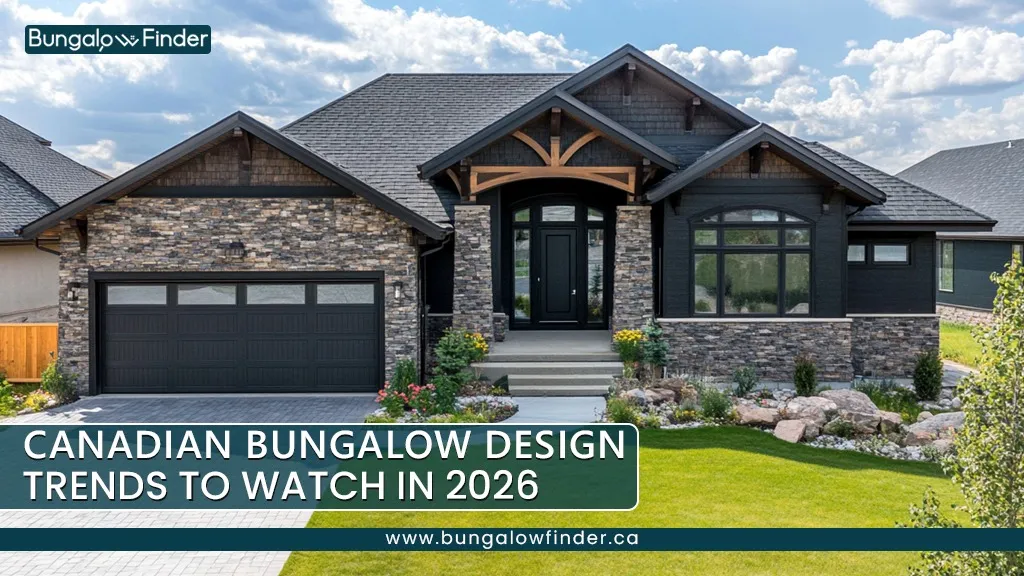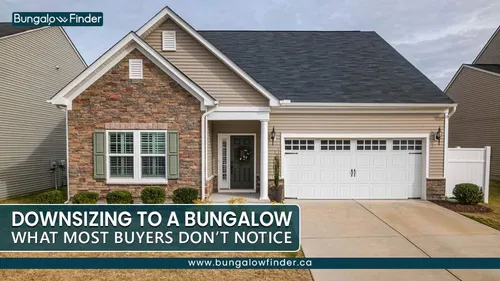Smarter Bungalows and the 2026 Canadian Housing Market
Explore how smart tech, automation, and energy-ready design are reshaping 2026 Canadian bungalows and driving buyer demand across the housing market.

The 2026 Canadian housing market is shaping up to be all about smarter, simpler living. You can already see it — in show homes, builder launches, and every listing for Canadian homes for sale, there’s this new wave of design thinking. The focus has shifted from how big a house feels to how well it works for daily life.
And nowhere is this change more visible than in bungalows. They’ve quietly become one of the most talked-about housing styles again — practical, adaptable, and now smarter than ever. As builders release more new bungalows for sale, buyers are beginning to expect integrated smart tech, seamless automation, and layouts that don’t just look modern but actually live that way.
Smart Tech Buyers Now Expect
If you scroll through current listings across the Canadian housing market, you’ll notice how often words like “smart”, “connected”, or “energy-efficient” pop up. These aren’t buzzwords anymore — they’re features that buyers look for before they even book a showing.
Smarter Climate Control
Smart thermostats have basically gone mainstream. People want heating systems that think for them — ones that adjust automatically, sense when you’re home, and help cut energy bills. For a single-storey bungalow, this isn’t just convenient; it’s practical. You get even temperature across the house and lower operating costs, which makes a clear selling point in the real estate market.
Everyday Security, Simplified
A decade ago, cameras on your door felt like overkill. Now, buyers expect them. Smart locks, motion sensors, and app-linked alarms have become must-haves in new homes for sale. These upgrades don’t just make a home feel safer — they build confidence in the property. On average, homes with smart security systems hold slightly higher resale value and tend to sell faster. That’s real return on investment.
Automation That Fits Into Daily Life
The best home automation isn’t about showing off tech; it’s about removing small daily annoyances. In many new bungalows for sale, you’ll find preset lighting moods, blinds that open with sunrise, and voice commands to adjust anything without getting up. Builders are wiring these systems right from the start now because it’s cheaper and cleaner to integrate during construction than add later.
What It Costs — and What It’s Worth
Not every smart feature adds equal value, but the right mix can make a strong impact on both comfort and resale.
Feature | Average Install Cost (CAD) | Typical ROI or Value Add |
Smart Thermostat | $300 – $700 | 15–20% reduction in energy costs |
Smart Security Package | $500 – $1,500 | 3–5% higher resale value |
Lighting Automation | $400 – $1,000 | Better energy efficiency + visual appeal |
Whole-Home Hub Integration | $1,000 – $3,000 | Boosts buyer interest and marketability |
These aren’t luxury add-ons anymore — they’re practical upgrades that align with how people live. Smart tech gives homes an edge, and in a market as competitive as Canada’s, every advantage counts.
The real payoff isn’t just in resale numbers but in perception. When a buyer walks into a bungalow that already feels modern and intuitive, the emotional connection forms instantly. That’s what makes them act faster.
The Bigger Trend: Energy Readiness
Technology aside, a huge part of the 2026 bungalow forecast is tied to energy and resilience. Builders are being pushed — by policy, by demand — to make homes ready for the next decade of living. That means EV charging prep, high-efficiency insulation, and layouts designed for zero-energy readiness.
Single-storey homes have an edge here. They’re easier to seal, easier to heat evenly, and more adaptable for solar or battery systems. When combined with sensors and thermostats that track usage, they tick both the green and financial boxes — cheaper to run and stronger in resale.
The Look and Feel of 2026 Bungalows
Bungalow design in Canada is starting to look more human again. The clean, glossy look that once defined “modern” homes is losing its appeal. Homeowners want comfort back. They’re choosing spaces that feel softer and warmer — more light, more texture, and more connection to the outdoors.
Not only this, but lighting design has evolved too. Instead of harsh fixtures, light is layered to move naturally through the home — bright in the morning, gentle by night. Smart lighting follows that rhythm automatically, helping the home flow through the day. The goal now isn’t just efficiency, it’s atmosphere — homes that work with people, not around them.
Why Bungalows Fit the Future of Canadian Living
As cities expand and prices stretch, bungalows are becoming the middle ground for many Canadians — affordable enough to enter the market, flexible enough to grow old in. They work for downsizers, families, and even young professionals looking for a long-term base.
Because everything’s on one level, smart integrations are easier to wire and maintain. Aging homeowners appreciate voice control and automated safety features, while younger buyers like the idea of tech convenience without complexity. It’s a design that grows with the person living in it — something you don’t always get in multi-level homes.
And as the Canadian housing market continues its slow pivot toward sustainability and comfort, these smaller, smarter homes are gaining the spotlight.
Final Perspective
The bungalow of 2026 is going to look simple — but under that simplicity will be layers of quiet intelligence. A thermostat that learns, locks that secure themselves, lights that move with your rhythm, and an energy system that saves without effort.
If you’re building, selling, or just browsing bungalows for sale, this is the direction to watch. Buyers are no longer impressed by square footage alone. They’re paying attention to what a home can do for them — how it saves time, how it adapts, how it feels.
The next phase of the Canadian housing market isn’t about bigger houses. It’s about better ones — homes that blend design, function, and foresight. And bungalows, quietly, are leading that change.
FAQs
1. Will house prices go down in 2026 in Canada?
Hard to say for sure, but most signs point to prices holding steady. Some cities might cool off a little, others could edge up. Nothing dramatic either way.
2. What are the interior design trends for 2026?
Warm, natural, and practical. Think soft colours, open light, and furniture that feels lived in — not perfect, just comfortable.
3. What’s the forecast for Canada’s real estate market in 2025?
Looks stable overall. The wild price jumps are gone, but demand’s still steady, especially for newer, energy-efficient homes.













